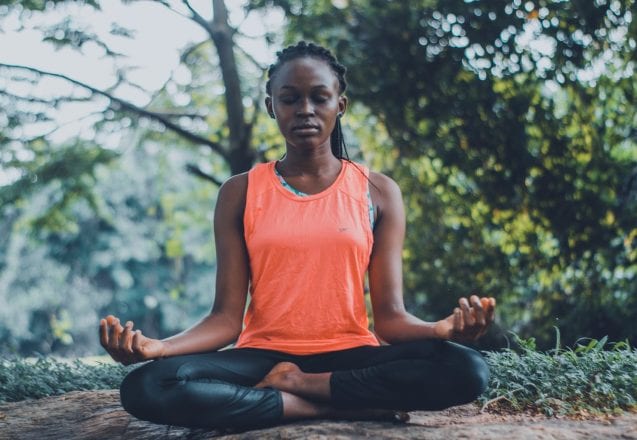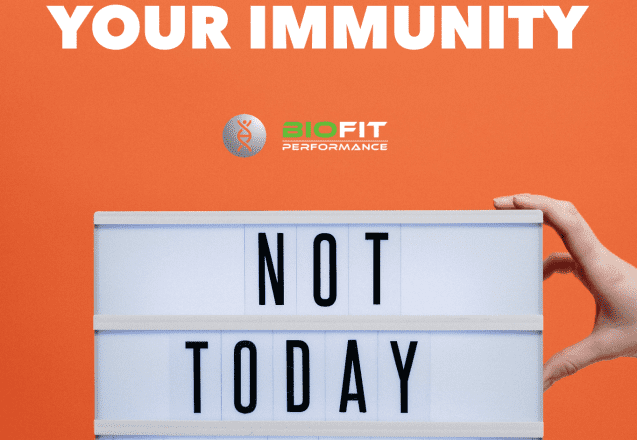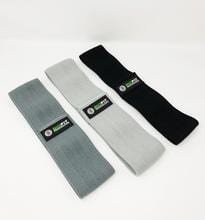By Meagan Flynn BSc, CSCS, CPT, PN1, FMS
Did you know ingesting bacteria can actually make you healthier? Yes, its true, probiotics have been shown as incredibly beneficial not only for our gut health but for our entire bodies. When it comes to athletic performance, being on the top of your game for a competition or during intense training is of the utmost importance. Nothing puts a damper on your big day quite like being stuck on the toilet from that bad sushi you had yesterday or the cold you caught on the plane heading to your competition. As coaches, so much emphasis is put on not overtraining our clients or athletes and bulletproofing their bodies to be at peak physical fitness, we overlook the inside. In order to be functioning our system optimally as a whole needs to be working optimally as well. There is a common phrase coaches like to use ” you can’t out train a poor diet.” I would like to add “you can’t out train poor health.”
60 to 70 million Americans are affected by digestive diseases, costing the U.S. over $100 billion per year, according to the National Institute of Diabetes and Digestive and Kidney Diseases back in 2004. This number above doesn’t even include the other disorders and diseases that are largely linked to poor gut health like chronic inflammation, autoimmune diseases, and neurological disorders. With this overwhelming amount of people afflicted by digestive diseases and disorders, you’ve likely come across a client, family member, friend, or maybe even yourself may be plagued with some gastrointestinal issues. Probiotic use has been considered as a preventative and therapeutic approach to restore the healthy arrangement and function of our gut microbiome.
Use this as a guide to all things probiotics, what they are, their benefits, which foods to eat, which to avoid, and what supplements, if any, you should take to increase your gut health naturally, for athletes and general populations.
What does our microbiome do and where do probiotics come into play?
Probiotics are live microorganisms (in most cases, bacteria) that are similar to beneficial microorganisms found in the human gut. Also known as, ‘friendly” or “good” bacteria. (NIH) You may be surprised to know that bacteria in our body, known as our microbiome, outnumber our cells 10 to 1, just let that sink in for a second. If we were to dissect down to the cellular level, we are mainly made of bacteria. Every gut is sterile at birth, however, traveling through the birth canal is where we are first introduced to the microbiome of our mother, and in turn, our own immune system starts producing beneficial bacteria. Over time our gut cultivates a varied and individualistic amount of bacterial species, determined in part by our genetics and in part by our environment and what bacteria live on those around us. All 100 trillion bacteria that make the GI tract their playground are critical to our health on an impressive scale.
Some of you may have heard the term that the gut is our second brain, this came about from findings that the gut actually has its own nervous system called the enteric nervous system, whose main purpose is to regulate bodily functions of the gut and communication between the gut and the central nervous system- the brain and spinal cord, via the gut-brain axis. Communication can go in both directions gut-to-brain and brain-to-gut, and this is responsible for controlling the coordination between the brain, the intestinal tract, and endocrine and immune systems involved in maintaining gut function. The guts immune system has 70-80% of the body’s immune cells and the guts endocrine system uses 20 different hormones. If the balance of beneficial bacterial to pathogenic gets out of whack, it is easy to see how this can throw off a cascade of problems throughout the body because of its vast network and function in our immune, endocrine, and nervous system, as well as the role it plays in metabolic processes through absorption and production of nutrients and vitamins. As important as the GI tract is it’s highly vulnerable to the outside world and can be greatly influenced by diet. Current research has found a correlation that suggests our diet may play a direct role on our microbiota and health status. Disruptions of our microbiota may result in diverse disease states including chronic inflammation, autoimmune disease, and neurological disorders. Probiotics are proving to have an important role in our diet and are giving us a chance to have a safe, cost-effective and natural approach that protects us from infection.
In short, Our gut bacteria play important roles in:
- regulating digestion and metabolism
- instructing our immune system
- building and maintain the gut wall from invaders and pathogens
- blocking harmful microbes from setting up shop by producing antimicrobial chemicals to defend us from pathogens
- these bacteria also produce hundreds of neurochemicals the brain uses to regulate basic mental and physiological processes such as mood, memory, and learning.
Who knew bacteria had so much power over our health and why has the gut been so largely overlooked by health care providers when preventing and treating various symptoms largely linked to gut health? Probiotic research started back in the 1960s and just in the past decade has started to catch on; nonetheless, it is still widely overlooked by health professionals or misunderstood by consumers as to what probiotics actually help with and why you should include probiotics into your diet.
Benefits of Probiotics?
Probiotics have the potential to alleviate and treat various clinical symptoms such as diarrhea, traveler’s diarrhea, gastroenteritis, irritable bowel syndrome, and inflammatory bowel disease (IBD; Crohn’s disease and ulcerative colitis), cancer, depressed immune function, inadequate lactase digestion, infant allergies, failure-to-thrive, hyperlipidemia, hepatic diseases, Helicobacter pylori infections, and others.
Digestive health
One of the most well-known benefits of probiotics is their ability to aid in digestion and relieve unwanted symptoms directly related to the gut. Lactic acid bacteria, in particular, have been proven to help aid in lowering the pH of the intestines, creating a thriving environment for beneficial bacteria to assist in the proper breakdown and production of essential enzymes and nutrients. This allows our bodies to fully utilize the nutrients from the foods we are already eating for optimal absorption. You can have the best nutritional program and eat the healthiest foods, but it’s not about the nutrients you eat, it’s about the nutrients you’re able to absorb.
Over the last few years, multivitamins have taken a back seat in the supplement industry. No longer are they the golden standard, staple supplement everyone should be taking every day. The problem with multivitamins is they do not get absorbed optimally through our gut. Most often what happens is the majority of it gets excreted through your urine because its bioavailability sucks. Some “vitamins” included are not actually the chemical component found naturally in food, they were created in a lab to ” mimic” what is actually found in nature, and our bodies end up just excreting them out with waste. Eventually what you have is some really expensive weirdly colored pee. However, the best way to get nutrients is from the food you are already currently eating, given that the foods you are eating are not overly processed. The inclusion of beneficial bacteria in our guts allows for a better breakdown of our foods, and they even produce essential vitamins including B vitamins we wouldn’t get otherwise.
Another benefit of probiotics, specifically lactic acid bacteria, is their ability to alleviate lactose intolerance. These bacteria that are commonly found in fermented milk products, such as Greek yogurt and kefir, for instance, have enough of the lactase enzyme, that is critical for the breakdown of lactose, it actually prevents and alleviates symptoms commonly associated with lactose intolerant individuals.
Probiotics can also help improve chronic inflammatory diseases of the intestines, such as inflammatory bowel disease and celiac disease, both of which are characterized by a leaky intestinal barrier. The intestines allow the absorption of nutrients while also providing a barrier from harmful substances and bacteria. Tight junctions are basically the security guards along the intestinal wall, sealing the space between adjacent epithelial cells. They say who gets in (nutrients, water, ions) and who does not (pathogens and other harmful substances). These tight junctions are not fixed complexes; they are constantly being remodeled due to interactions with the environment, such as food residue, toxins, infections, stress, aging, and beneficial bacteria. If the tight junctions become faulty or do not work properly, they allow intestinal contents to leak out into other areas of the body like the bloodstream, spiking inflammation and alarming our immune system to go on attack. Increased intestinal permeability is implicated in autoimmune, inflammatory, and atopic diseases (such as asthma and eczema), which can manifest locally and systemically. The beneficial bacteria in our gut help safeguard the epithelial lining of our GI tract and keep tight junctions working properly, along with the proper diet of eliminating triggers and stress management.
Immune Boosting and Fights off Inflammation
If 70-80% of the body’s immune system resides in the gut, it is not so far-fetched of an idea that healing the gut and keeping it healthy can be of great importance when we are looking at warding off disease and increasing our longevity and quality of life. If our gut is healthy, chances are we are healthy. Unfortunately, due to our modern culture leaky gut is more common than we would like and autoimmune diseases are on the rise while inflammation is still the main culprit behind majority of diseases. Hashimoto’s, lupus, multiple sclerosis, psoriasis, fibromyalgia, rheumatoid arthritis, and type 1 diabetes, just to name a few, are all strongly correlated to a misdirected immune system, where your immune system starts attacking your own cells, and it is speculated that this is the result of a leaky intestinal barrier, allowing the passage of infection, antigens, toxins, and food residue into the bloodstream and allowing it to travel all over the body, sending the immune system into a frenzy. As you can see, having a leaky gut can lead to far greater problems outside of the digestive system. When the GI tract becomes inflamed and permeable, it serves as a link between inflammatory disease of the GI tract and extra-inflammatory disorders such as arthritis.
Consuming probiotics can down-regulate or modify the immune response and improve the immune system’s reaction, believed to be by, activating and increasing the number of macrophages, increasing levels of cytokines, increasing natural killer cell activity, and/or increasing levels of immunoglobulins. Majority of research shows the benefit of consuming probiotics to modulate inflammation and re-direct the immune system in a quest to improve autoimmune diseases and inflammation such as rheumatoid arthritis.
More research needs to be done as there still is no cure for the diseases mentioned above; however probiotic use has only shown positive results, and it is worth talking to with your doctor about if you or someone you know are suffering from inflammation and/or autoimmune disease. Above all, it should be looked at as a preventative measure for protection as we age with life’s stresses to keep ourselves thriving and living a good quality life.
Decrease in Antibiotic Resistance
“Historically, we had plenty of probiotics in our diets from eating fresh foods from good soil and by fermenting our foods to keep them from spoiling. Today, however, because of refrigeration and agricultural practices like soaking our foods with chlorine, much of our food contains little to no probiotics in the name of sanitation. Actually, many foods contain dangerous antibiotics that kill off the good bacteria in our bodies.”- Dr. Axe
Current research on probiotics has in part been dedicated to finding alternative treatments to antibiotics and to find a solution against the ongoing problem of antibiotic resistance among superbugs. The growing rate of hospital infections and strain-resistant bacteria have become hard to manage with traditional protocol. Mostly due to the overuse of antibiotics such as doctors excessively prescribing antibiotics and/or misuse by patients, antibacterial soaps, cleaning products and heavy use of pesticides on produce and antibiotic use on our livestock. This becomes problematic because heavy use of chemical pesticides reduces the quality of our soil, and with the additional overuse of antibiotics and related products we are completely and excessively sterilizing our environment and therefore sterilizing ourselves, which in turn is negatively affecting our health as a community and throwing off our microbiome balance that keeps us functioning at our best. On top of all of that, harmful bacteria are evolving and finding ways to become more aggressive and more efficient in the face of traditional antibiotic treatment which is very worrisome and remains a huge issue we are facing. The problem with antibiotics and antibacterial agents is although they kill harmful bacteria they also kill beneficial bacteria we need to be able to fight them off. Also, these beneficial bacteria are important for our basic bodily functions and directly correlate to our immune, endocrine, and neurological systems affecting our bodies on a grander scale. What has been lacking for so long with traditional protocol is doctors weren’t advising patients to replace those beneficial bacteria lost through a course of antibiotic treatment, therefore throwing our microbiome balance off and cascades of other ailments end up showing up later on, eventually continuing our need for medical treatment. Unbeknown to us that this treatment of antibiotics although it does help kill harmful bacteria and makes us feel better, after a certain point it stops being as effective due to antibiotic-resistant strains. Fortunately, doctors are starting to catch on and are very hesitant to prescribe antibiotics and are communicating with their patients the importance of probiotics as a result of the beneficial research being done on probiotics.
The good news is, probiotics may decrease the risk of antibiotic-induced superinfections in the gut and the vagina; as well as, produce antibacterial substances that depress pathogenic bacterial inhabitants and disrupt biofilms, making it easier for antibiotics to function; and enhance intestinal immunity, therefore aiding in the annihilation of the organisms at the mucosal site. In recent studies, the inclusion of lactic acid bacteria for 30 days after being treated with metronidazole administered orally for seven days doubled the cure rate in women treated for bacterial vaginosis. Also in another current research, the amount of amoxicillin required to kill E. coli was halved with the co-inclusion of lactic acid bacteria.
In 1994, the World Health Organization deemed probiotics to be the next-most important immune defense system when commonly prescribed antibiotics are rendered useless by antibiotic resistance.
May Improve Mental Illness
The communication between the gut and the brain via the gut-brain axis is crucial because it has the ability to modulate functions of our immune system, endocrine system (includes all the glands in your body that make hormones), metabolism, and nervous system. You may have previously believed that mood and behavior cannot possibly be affected by the gut; however, 95% of the body’s supply of serotonin (known as the body’s natural feel-good chemical) is produced by our gut bacteria, which in turn influences both mood and gastrointestinal activity. Gut bacteria produce and respond to the same neurochemicals—such as GABA, serotonin, norepinephrine, dopamine, acetylcholine, and melatonin—that the brain uses to regulate mood and cognition. Low serotonin levels are commonly associated with depression. Probiotics have become of great interest because of their anti-inflammatory qualities that may help to alleviate anxiety by reducing inflammation along the gut-brain axis.
It has been shown through research that harmful bacteria can ramp up anxiety, while numerous studies have shown that beneficial bacteria can cause anxiety-prone mice to calm down. In one study, mice were given broth with or without Lactobacillus rhamnosus. After 28 days, the mice were run through a variety of different tests to detect signs of depression and anxiety. What they ended up finding was mice given the lactobacillus were more willing to explore exposed areas of the maze and less likely to give up and just start floating in the forced swim test. Also, their physiological response to stress was lessened, and lower levels of the stress hormone corticosterone were produced, while an increase in GABA- whose main role is reducing neuronal excitability- was found.
Stress-induced changes to the microbiome and increased intestinal permeability may, in turn, affect behavior and the brain. Inflammatory cytokines, produced defensively by the gut in the face of an infection, may disrupt brain neurochemistry and make people more vulnerable to anxiety and depression. This possibly can help explain why those with chronic GI disorders such as Crohn’s disease, ulcerative colitis, and irritable bowel syndrome are also commonly plagued by anxiety and depression. Keeping anxiety and depression under control may improve inflammation in the gut and improvements in inflammatory responses in the gut may improve mood by altering brain biochemistry.
Recognizing that communication between the brain and the gut is bidirectional also points toward new ways of treating both the physical symptoms of intestinal disease and the psychological disorders that are so often present. Inclusion of probiotics may lead to a reduction in re-hospitalization from manic episodes in manic depression. Probiotics have also shown some surprising and hopeful results with autism, but research is still being done and it remains to be determined if in the future probiotics may also improve symptoms of autism including abnormal behaviors, cognitive and language development, brain function and connectivity.
Weight loss and Diabetes treatment
Probiotics may be of great use when it comes to alleviating symptoms and preventing Type 2 diabetes. In a large study of almost 200,000 subjects, a little bit more than 15,000 of them having type 2 diabetes, probiotic-rich yogurt reduced the risk of developing diabetes. Diabetics may benefit from probiotics by improvement of insulin sensitivity, management of blood sugar levels, and a decrease in autoimmune response, with the improvement of immune responses and reaction.
Human diets may have a direct effect on the microbiome, which ultimately can change biochemical reactions taking place in the intestines. Research has determined that gut microbes can alter gene expression in the intestinal tract mucosa, completely altering the function of the GI tract, such as nutrient absorption, energy metabolism, and intestinal barrier function. Changes in the microbiome, where beneficial bacteria is lower than the amount of harmful bacteria, may contribute to disease susceptibility and there have been several studies that link this change in microbial communities to low-grade chronic inflammation and metabolic disorders, ultimately resulting in metabolic syndrome, obesity, and diabetes.
Probiotics may enhance the functionality of existing microbes in the gut by competition for nutrients, production of growth substrates or inhibitors and modulation of intestinal immunity.
Probiotics on Athletic Performance?
The GI system plays an important role in an athletes ability to perform strenuous exercise and promotes early recovery. In contrast, if the GI system is compromised; this will likely impair performance and the athlete’s ability to recover quickly. Symptoms such as nausea, vomiting, abdominal angina, and bloody diarrhea may result from a weakened GI system and occurs in 25-70% of endurance athletes.
For athletes, coaches, and exercise scientists preventing illness during competition and training is a top priority. Widespread curiosities exist on the use of probiotics to boost host resiliency to illness and how probiotics may indirectly improve athletic performance by preserving GI function, deterring immunosuppressive effects of rigorous exercise, and reduction in the likelihood of acquiring an illness. Some athletes, especially endurance athletes who participate in sports such as swimming, cycling, rowing, and triathlons, may suffer from frequent or increased incidences of upper respiratory tract illness during heavy training and competition. This is likely the result of physical and environmental stress put on the body during these times, which causes disruptions in immunity, increases in permeability of the intestinal tract, and consequentially allowing an increase in opportunity for pathogens to establish infection. Many of the changes in immunity from exercise are similar to the changes in immunity associated with other types of stress- specifically sleep deprivation, aging, and psychological stress.
With intense exercise the body reduces blood flow to the gut and directs it towards our extremities, thus resulting in oxidative stress and damage on our epithelial cells in our gut and loss of epithelial integrity. Loss of epithelial integrity is correlated with increases in intestinal inflammation, bacterial translocation, and increased GI permeability. Healthy individuals are able to manage and neutralize these negative effects without symptoms or negative consequences after strenuous exercise. However, certain individuals may have a higher vulnerability to intestinal injury and fluctuations in GI permeability based on factors such as age, being of the female sex, medications (NSAIDs mainly), anyone with limited cardiovascular and/or pulmonary capacity (COPD and heart disease, to name a few) dehydration, food intake, a hot humid environment, and type of exercise, its duration and intensity.
When it comes to professional athletes and general populations individualized training, nutrition, and supplemental strategies can be largely advantageous and used to prevent intestinal and immunity compromise during exercise.
Training Strategies
- Reduction of exercise intensity to maintain heart rates below the level at which symptoms occur, either temporarily or for a longer period of time based on the individual’s outcome.
- Another possibility is to precondition or train the gut to withstand prolonged exercise by gradually increasing intensity during a single training session, possibly creating an opportunity to establish an equilibrium that fits the altered physiological state.
- Also increasing fluids and food intake during training, studies show that individuals experience less GI discomfort during training when they consume fluids and easily digested food in training sessions.
Nutritional Strategies
- Avoid large meals and the intake of nutritional products that are not easily digested in the timeframe of 2-3 hours before strenuous physical activity
- such as foods high in fiber, fat or protein
- During exercise, easily digested carbohydrate ingestion is recommended for prolonged and intense exercise to replete glucose stores and aid in the post-exercise recovery process. However avoid hyperosmolar fluids, for instance, excessive amounts of carbohydrates like dextrose, as this has been associated with abdominal distress and diarrhea during training.
- Intake of high fat before exercise and during is not recommended, however fat enriched nutrition ingested post-exercise may improve GI function, reduction in intestinal inflammation, permeability, and bacterial translocation.
- Athletes personal preferences for food and fluids during training should be taken into consideration when advising
- Adequate fluid intake is crucial for maintaining hydration and intestinal barrier function during prolonged intense activity. Fluid loss is extremely variable between individuals and should be customized individually to maintain adequate hydration before, during, and after exercise.
Supplemental Strategies
- Avoidance of nonsteroidal anti-inflammatory drugs (NSAIDS), commonly used for pain management such as Aspirin, Ibuprofen, Celebrex, and Naproxen (Aleve) to name a few, as they aggravate GI distress and cause significant small intestinal injury especially during exercise. The use of NSAIDs is associated with a 3-5x greater increase in risk of upper GI complications, mucosal bleeding, or perforation when compared to no medication. If you must take this medication then avoid intense exercise until you are feeling better.
- The use of Glutamine, arginine, citrulline, nitrite, and nitrate supplementation is beneficial in improving GI blood flow because of the increase in nitric oxide and thereby may help decrease the risk of GI injury, intestinal permeability, and inflammation.
- Nitrate is normally ingested through green leafy vegetables such as lettuce, spinach, as well as beetroot. After ingestion, nitrate is reduced to nitrite by beneficial bacteria in our saliva and furthermore through the digestion process, nitrites are converted into nitric oxide (NO). Vitamin C and polyphenols naturally found along with green leafy vegetables and beetroot enhance the production of NO. Supplementing with beetroot juice or vegetable juice containing natural vitamin C around training shows increases in gastric blood flow, enhanced tolerance to moderate to high-intensity training, and improved time-trial performance. Conclusively, nitrate supplementation could prevent unwanted exercise related GI problems.
There is still a lot of research to be done on the effects of probiotics on athletes, however, in one study, 20 elite male runners over a 4 month period of winter training, half were given a placebo, and the other half received Lactobacillus fermentum. The athletes that received the probiotic supplement reported less than half the number of days of respiratory symptoms during the supplementation period compared to the placebo group, while illness severity was also lower in the probiotic group. In another study showing similar results, 721 healthy adults over three winter periods were given a range of probiotics with prebiotics formulations, which reduced the number of illness episodes (common cold, flu, and upper respiratory) by 30-45%, while also reducing the episode duration and severity of the illness. Substantial amounts of research indicate that probiotic bacteria have a strong innate ability to modulate various aspects of our immune system for the better, although it remains to be seen if probiotics can give an increased edge to healthy elite athletes who are on the top of their game. No matter how small of an edge they may give to athletes, the research has shown probiotics to be largely beneficial for overall health in non-athletes and general populations. The choice to use probiotic supplements should be based solely on the individual and their desired outcome.
Probiotic Killers?
Top 9 Probiotic killers:
- Overuse of prescription antibiotics
- Sugar
- GMO foods
- Inflammatory Gluten
- Emotional Stress
- Medications
- Alcohol
- Lack of exercise
- Over sanitation
- Smoking
- Poor sleep habits
How to increase your gut health and reap the benefits of probiotics?
Eating more sour foods like apple cider vinegar and fermented vegetables like Sauerkraut and Kimchi are naturally going to deliver several beneficial bacteria for gut health. Apple cider vinegar can even act as a prebiotic as well, feeding beneficial bacteria already living in your gut to keep them flourishing. One tablespoon twice a day to any drink of your choice is an easy way to consume apple cider vinegar or can even be used in salad dressings. Another way is to increase the amount of probiotic-rich foods into your diet such as high-quality grass-fed Greek yogurt, Kefir, and Kombucha. Additionally, eating healthy foods high in fiber like chia seeds, flaxseeds, and sweet potatoes to name a few are going to naturally boost probiotics by fueling the beneficial bacteria in your gut to keep them alive. Lastly, taking a high-quality probiotic supplement is another great way to boost the gut microbiome, but there are a few things to know before choosing one which I will go into detail below.
Probiotic-rich foods
- Kefir (Coconut kefir is a dairy free option)
- Cultured vegetables (Sauerkraut and Kimchi)
- Kombucha
- Yogurt
- Apple cider vinegar
- Natto
- Kvass
- Miso and Tempeh
- Raw dairy (unpasteurized)
Prebiotic Rich Foods
- Chicory root
- Garlic
- Asparagus
- Onions
- Artichokes
- Bananas
- Flaxseeds
- Chia seeds
- Pumpkin seeds
How can you tell which supplement to buy?
In order to choose the best probiotic supplement for you, different strains need to be taken into account. Different probiotic strains have been associated with different therapeutic properties, therefore if you are interested in taking probiotics to benefit a specific concern knowing the difference between strains and choosing the one that is right for you can possibly give a better outcome. I will include a graph below with the various probiotics and their associated therapeutic benefits. On the other hand, if you just wish to increase the diversity of your gut microbiome just for all around prevention and improving gut health eating probiotic-rich foods or consuming a highly diverse probiotic supplement may be of interest.
Criteria used to select a lactic acid bacteria to be used in a quality probiotic:
- Exert beneficial effect on host
- Must remain viable through-out shelf life of product
- Withstand transit through the gut
- Able to adhere to the intestinal lining and colonize the GI tract
- Produce antimicrobial substances toward pathogens
- Stabilize the intestinal microflora and be associated with health benefits
Criteria you should use to choose a high-quality probiotic supplement:
- Brand quality
- Look for reputable brands that do outside lab verification to prove that the supplement you are buying actually does provide what it says it should. Consumerlab.com, NSF International, U.S. Pharmacopeia, and UL have long histories of certifying supplements. However, they do not verify the supplement has therapeutic value, just verification that it contains what is advertised. Supplements brands have to pay big money to get their products verified so many do not, look for brands that do test to show transparency to consumers. Also, read reviews on their website to read other consumers history with the product.
- High CFU count
- Choose a probiotic supplement that has 15 billion to 100 billion colony forming units. The more the probiotic supplement has, the better to assure that through digestion and shelf life you are still getting a large amount of beneficial bacteria into the gut and allow them to stabilize themselves there.
- Survivability and strain diversity
- The more diverse your gut is, the healthier it is believed to be, so choosing a probiotic that has a variety of different strains, such as 10 or more is a better value. Also, choosing a supplement that is shelf stable and does not need to be refrigerated is also vital to the survivability once the supplement is introduced to the harsh environment of the stomach during digestion. On another note, inclusion of strains like Saccharomyces boulardii, Bacillus coagulans, B. subtillus, Lactobacillus Plantarum and other cultures allow the probiotic to make it to the gut and have the ability to adhere and mature there.
- Prebiotics and supplementary ingredients
- In order for commensal bacteria to survive and grow they need fuel known as prebiotics; therefore they should also be included in a high-quality probiotic supplement. Also, some high-quality probiotics will also include other ingredients to help support digestion and immunity, such as ginger, milk thistle, ashwagandha, and others.
- Living vs. dead
- “Live and active cultures” is important to ensure you are not buying possibly dead bacteria that will not provide the benefits you are after.
Probiotic side effects/Precautions
Always consult with your healthcare practitioner before radically changing your diet or including supplementation. Although probiotics help with digestive health, they can cause mostly minor side effects such as upset stomach, bloating, gas, constipation, and even diarrhea in the beginning of a rigorous new change in diet and inclusion of probiotic supplementation. Therefore, if you do want to start including probiotics into your diet or supplementation into your arsenal then do so gradually over time, starting with a small dose or small inclusion of probiotic-rich foods. For instance, start with the inclusion of healthy foods like sauerkraut, apple cider vinegar, and asparagus, then include Greek yogurt and kefir as tolerated, and experiment with Kombucha drinks as they are non-dairy and some contain digestive supporting ingredients like ginger to soothe unwanted symptoms. Adding in a good quality supplement can also help quicken the process if you choose to. The side effects mentioned are usually short-lived and will dissipate once you start cultivating your gut with beneficial bacteria, however always monitor along with your doctor and if unwanted symptoms continue after a few weeks, stop taking the probiotic and consult your doctor.
In very rare instances, some people who have a compromised immune system, recent surgery, acute pancreatitis, prolonged hospitalization, or serious illness may experience more severe complications. However, this risk is very low, and no serious infections have been reported in clinical studies of general populations.
Take Away Points
- Probiotics are beneficial bacteria commonly found in the gut microflora
- Our gut bacteria play important roles in:
- Regulating digestion and metabolism
- Instructing our immune system
- Building and maintain the gut wall from invaders and pathogens
- Production and secretion of antimicrobial chemicals that fight off harmful invaders
- Production of hundreds of neurochemicals the brain uses to regulate basic mental and physiological processes such as mood, memory, and learning.
- The ratio between beneficial bacteria to harmful bacteria is crucial to our overall health. If this ratio gets out of whack, our health tends to see negative consequences as a result whether it is found locally in the gut- such as IBS or Crohn’s disease or found systemically in the body- such as psoriasis or Rheumatoid arthritis.
- Exercise can increase intestinal permeability, bacterial translocation, and intestinal inflammation. However, there are training, nutrition, and supplemental strategies that can be used to prevent unwanted consequences of intense training.
- Ways to increase probiotics in your gut are
- Avoid probiotic killers as much as possible- such as alcohol, NSAIDs, stress, and sugar.
- Eat more sour and fermented foods to restore balance- such as sauerkraut, kefir, kombucha, and apple cider vinegar
- Eating a diet full of healthy fiber such as sweet potatoes, asparagus, flax seeds, and garlic to help the beneficial bacteria thrive
- Take a high-quality probiotic supplement
References
Consumer Reports. (2018). What ‘USP Verified’ and Other Supplement Seals Mean. [online] Available at: https://www.consumerreports.org/vitamins-supplements/what-usp-verified-and-other-supplement-seals-mean/ [Accessed 11 Sep. 2018].
Dr. Axe. (2018). Probiotics Benefits, Probiotic Foods & Probiotic Supplements – Dr. Axe. [online] Available at: https://draxe.com/probiotics-benefits-foods-supplements/ [Accessed 11 Sep. 2018].
Furness JB, e. (2018). Nutrient tasting and signaling mechanisms in the gut. II. The intestine as a sensory organ: neural, endocrine, and immune responses. – PubMed – NCBI. [online] Ncbi.nlm.nih.gov. Available at: https://www.ncbi.nlm.nih.gov/pubmed/10564096 [Accessed 11 Sep. 2018].
Healthline. (2018). 5 Possible Side Effects of Probiotics. [online] Available at: https://www.healthline.com/nutrition/probiotics-side-effects#section5 [Accessed 11 Sep. 2018].
Hemarajata, P. and Versalovic, J. (2012). Effects of probiotics on gut microbiota: mechanisms of intestinal immunomodulation and neuromodulation. Therapeutic Advances in Gastroenterology, 6(1), pp.39-51.
https://www.apa.org. (2018). That gut feeling. [online] Available at: https://www.apa.org/monitor/2012/09/gut-feeling.aspx [Accessed 11 Sep. 2018].
Information, H., Statistics, H., States, D., States, D., Center, T. and Health, N. (2018). Digestive Diseases Statistics for the United States | NIDDK. [online] National Institute of Diabetes and Digestive and Kidney Diseases. Available at: https://www.niddk.nih.gov/health-information/health-statistics/digestive-diseases#1 [Accessed 11 Sep. 2018].
MD, A. (2018). 9 Signs You Have a Leaky Gut – Amy Myers MD. [online] Amy Myers MD. Available at: https://www.amymyersmd.com/2018/03/9-signs-you-have-leaky-gut/ [Accessed 11 Sep. 2018].
NCCIH. (2018). Probiotics. [online] Available at: https://nccih.nih.gov/health/probiotics [Accessed 11 Sep. 2018].
Parvez, S., Malik, K., Ah Kang, S. and Kim, H. (2006). Probiotics and their fermented food products are beneficial for health. Journal of Applied Microbiology, 100(6), pp.1171-1185.
Reid, G. (2006). Probiotics to Prevent the Need for, and Augment the Use of, Antibiotics. Canadian Journal of Infectious Diseases and Medical Microbiology, 17(5), pp.291-295.
Sender, R., Fuchs, S. and Milo, R. (2016). Revised Estimates for the Number of Human and Bacteria Cells in the Body. PLOS Biology, 14(8), p.e1002533.
Ulluwishewa, D., Anderson, R., McNabb, W., Moughan, P., Wells, J. and Roy, N. (2011). Regulation of Tight Junction Permeability by Intestinal Bacteria and Dietary Components. The Journal of Nutrition, 141(5), pp.769-776.
van Wijck, K., Lenaerts, K., Grootjans, J., Wijnands, K., Poeze, M., van Loon, L., Dejong, C. and Buurman, W. (2012). Physiology and pathophysiology of splanchnic hypoperfusion and intestinal injury during exercise: strategies for evaluation and prevention. American Journal of Physiology-Gastrointestinal and Liver Physiology, 303(2), pp.G155-G168.
West NP, e. (2018). Probiotics, immunity and exercise: a review. – PubMed – NCBI. [online] Ncbi.nlm.nih.gov. Available at: https://www.ncbi.nlm.nih.gov/pubmed/19957873 [Accessed 11 Sep. 2018].























